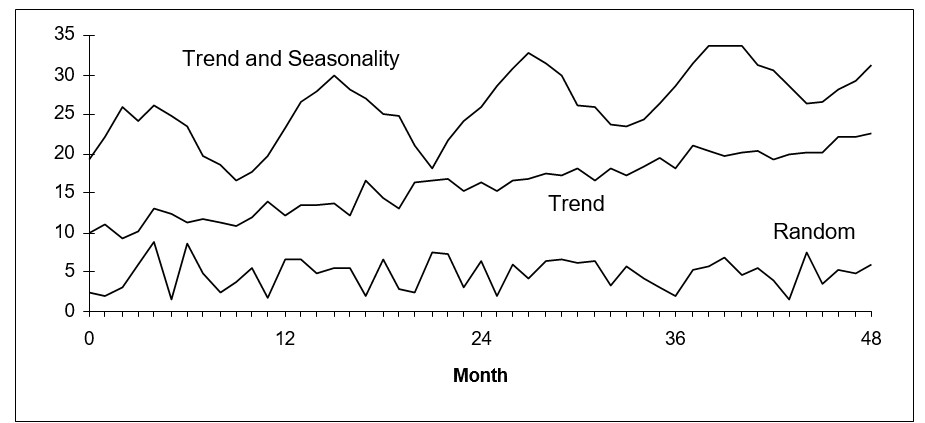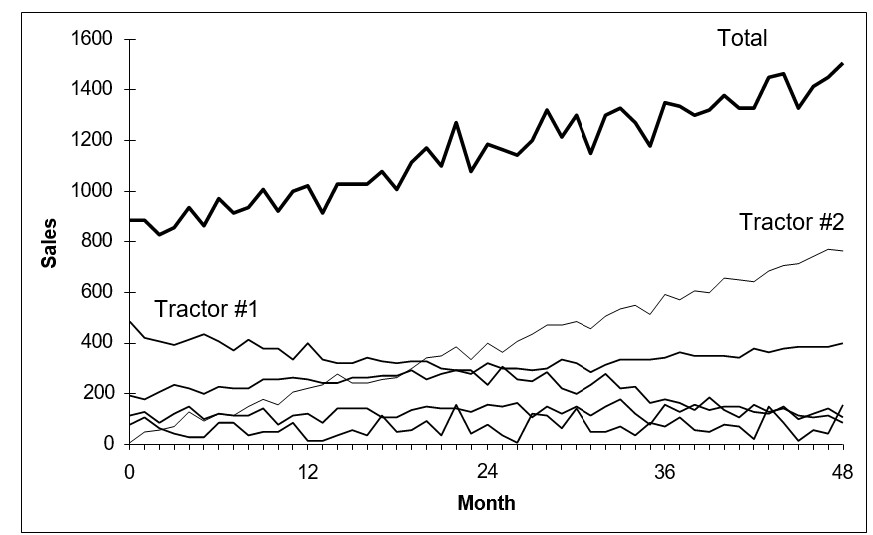Demand planning goes beyond simply forecasting product needs; it’s about ensuring your business meets customer demands with precision, efficiency, and cost-effectiveness. Latest demand planning technology addresses key challenges like forecast accuracy, inventory management, and market responsiveness. In this blog, we will introduce critical demand planning trends, including data-driven insights, probabilistic forecasting, consensus planning, predictive analytics, scenario modeling, real-time visibility, and multilevel forecasting. These trends will help you stay ahead of the curve, optimize your supply chain, reduce costs, and enhance customer satisfaction, positioning your business for long-term success.
Data-Driven Insights
Advanced analytics, machine learning, and artificial intelligence (AI) are becoming integral to demand planning. Technologies like Smart UP&O allow businesses to analyze complex data sets, identify patterns, and make more accurate predictions. This shift towards data-driven insights helps businesses respond quickly to market changes, minimizing stockouts and reducing excess inventory.
Probabilistic Forecasting
Probabilistic forecasting focuses on predicting a range of possible outcomes rather than a single figure. This trend is particularly important for managing uncertainty and risk in demand planning. It helps businesses prepare for various demand scenarios, enhancing inventory management and reducing the likelihood of stockouts or overstocking.
Consensus Forecasting
Modern manufacturing is moving towards an integrated approach where departments and stakeholders collaborate more closely. Collaborative forecasting involves sharing insights across the supply chain, from suppliers to distributors and internal teams. This approach breaks down silos and ensures that everyone is working towards a common goal, leading to a more synchronized and efficient supply chain.
Predictive and Prescriptive Analytics
Predictive analytics forecasts future outcomes based on historical data and trends, helping businesses anticipate demand fluctuations. For example, Smart Demand Planner (SDP) automates forecasting to adjust inventory and production levels accordingly.
Prescriptive analytics goes further by offering actionable recommendations. Smart Inventory Planning and Optimization (IP&O), for instance, prescribes optimal inventory policies based on service levels, costs, and risks. ogether, these tools enable proactive decision-making, allowing companies to both predict and optimize their responses to future challenges.
Scenario Modeling
Scenario modeling is becoming a key part of demand planning, enabling businesses to simulate different scenarios and assess their impact on operations. This method helps companies create adaptable strategies to effectively handle uncertainties. Smart IP&O enhances this capability by offering What If Scenarios that allow users to test different inventory policies before implementation. By adjusting variables like service levels or order quantities, businesses can visualize the effects on costs and service levels, empowering them to select the optimal strategy for minimizing risks and controlling costs.
Real-Time Visibility
As supply chains become more global and interconnected, real-time visibility into inventory and supply chain activities is crucial. Enhanced collaboration with suppliers and distributors, combined with real-time data, enables businesses to make quicker, more informed decisions. This helps optimize inventory levels, reduce lead times, and improve overall supply chain resilience.
Multilevel Forecasting
This involves forecasting at different levels of the product hierarchy, such as individual items, product families, or even entire product lines. Multilevel forecasting is vital for businesses with complex product portfolios, as it ensures that forecasts are accurate at both the micro and macro levels.
Demand planning is a decisive aspect of modern supply chain management, offering businesses the ability to enhance operational efficiency, reduce costs, and better meet customer demands. Leveraging advanced platforms like Smart IP&O significantly improves forecasting accuracy and inventory management, enabling swift responses to market fluctuations. Automated statistical forecasting, combined with capabilities like hierarchy forecasting and forecast overrides, ensures that forecasts are accurate and adaptable, leading to more realistic planning decisions. Additionally, with tools like scenario modeling, businesses can explore various demand scenarios across their product hierarchy, facilitating informed decision-making by providing insights into potential outcomes and risks. This approach allows businesses to anticipate the impact of policy changes, make better decisions, and ultimately optimize their inventory and overall supply chain management, staying ahead of key trends in the process.




